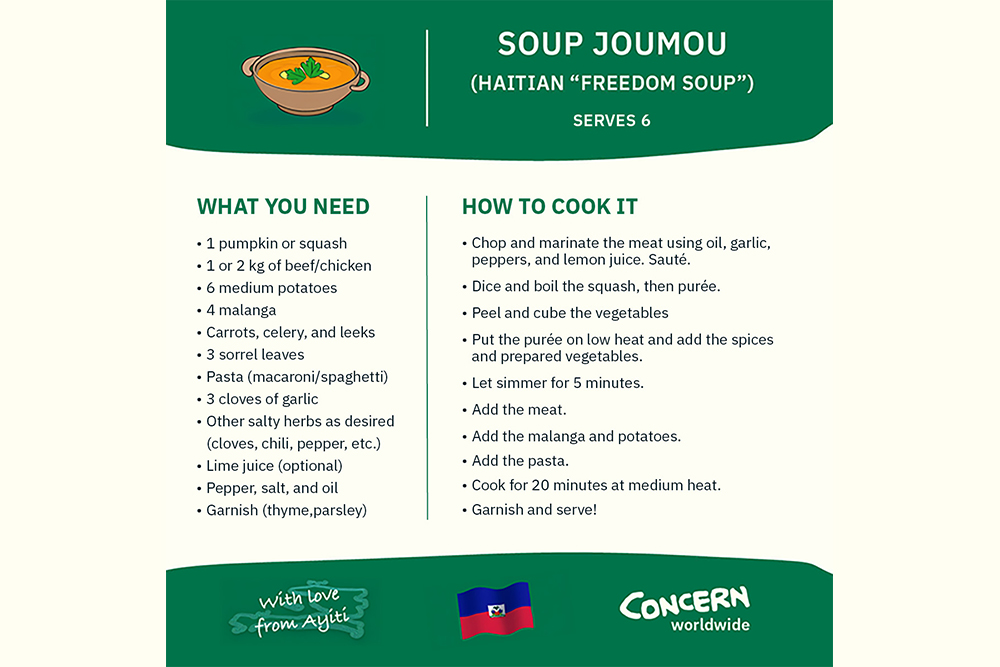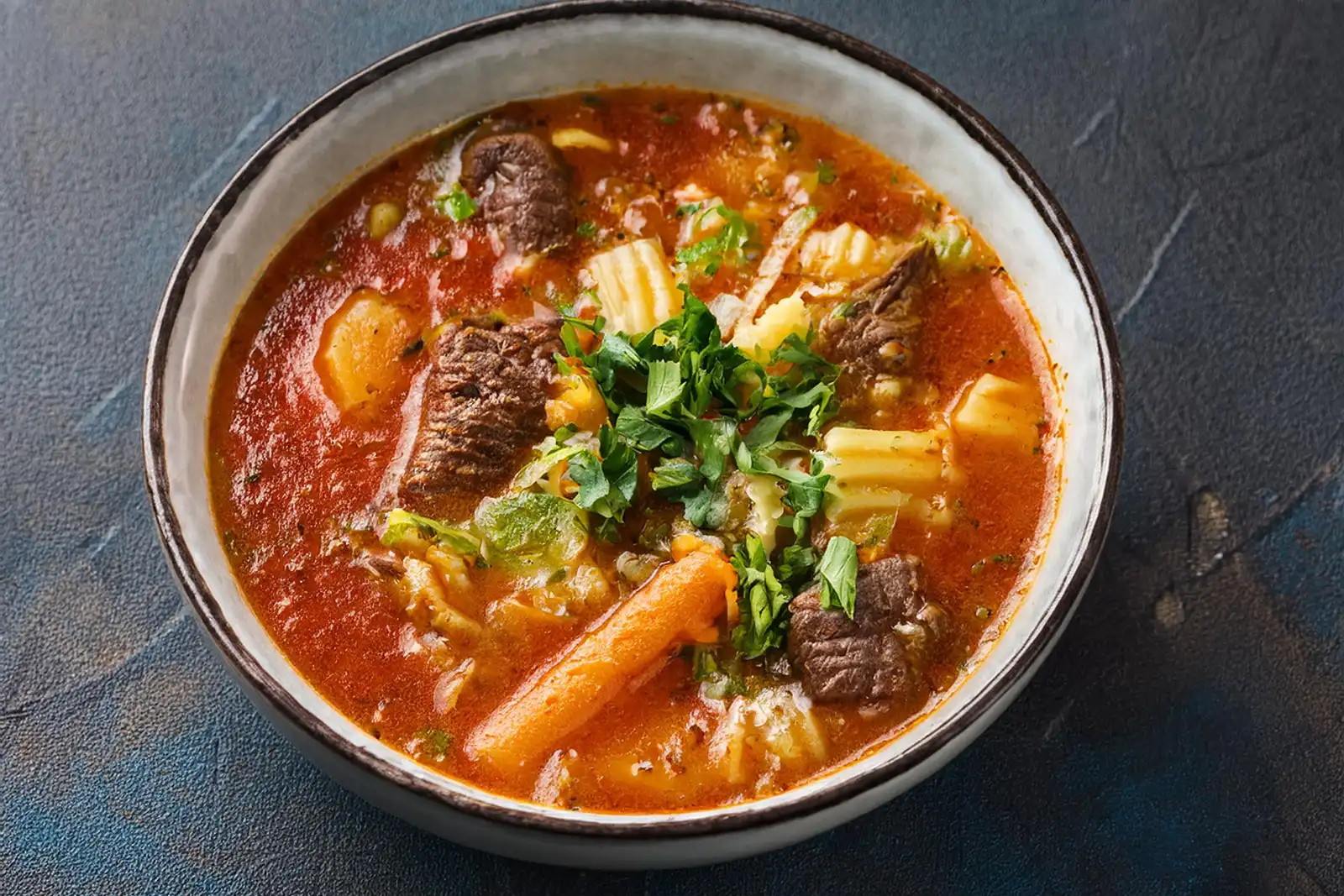Food is often associated with public holidays and in the case of Haiti, New Year’s Day is also Independence Day. Haitians celebrate by preparing a dish that has been classified as a cultural treasure by the UN.
A tangled legacy
The history of Haiti is fascinating. It was the “original slave nation” – practically every Haitian has ancestors who were brutally stolen from Africa and transported into a life of enslavement on the island of Hispaniola, which modern-day Haiti now shares with the Dominican Republic. There was an indigenous population, but they were effectively wiped out in a very short space of time by the French in the 17th century. Haiti was also the first country in the world where enslaved people rose up against colonizers and created a free nation and government.

Jean Jacques Dessalines proudly proclaimed independence for Haiti on January 1st 1804 in the northern city of Gonaïves, following a brutal and bloody 13-year revolution. Dessalines would go on to declare himself Emperor for life, which didn’t sit well with those who had fought so hard for their freedom, and his reign (and life) lasted for just two more years. He was assassinated in 1806, the first of many Haitian leaders whose time in office would come to a premature end. You can read more about Haiti’s history here.

Not surprisingly, France was unimpressed with the idea of Haitian independence and would not formally recognize the new country’s existence until 1862. Even then, it extracted a high price for that recognition, demanding financial reparations at such a punitive level that Haiti would never fully recover. The last payments were made in 1947. Incidentally, the United States also withheld recognition of Haiti until 1862.
Regardless, Haitians celebrate January 1st as Independence Day and 1804 as the year of their nation’s birth. One way they mark the occasion is to prepare a dish of epic proportions known as Soup Joumou. And, like Haiti, it too has an interesting history. The story goes that French colonizers forced their slaves to grow pumpkins exclusively for consumption by the landed class and for export abroad. Haitians themselves were effectively banned from consuming this squash, known in Haitian Creole as Joumou.

Soup celebration
So, understandably, one of the first ways the people of Haiti demonstrated their independence back in 1804 was to hit the pumpkin patch and take to the kitchen. There they made this previously forbidden food the key ingredient in a wholesome, flavorful broth, which later gained the nickname “Independence Soup.” It generally incorporates calabaza squash, some type of meat (usually beef), and a mixture of vegetables, all seasoned with a variety of available spices.
Like all the classic dishes of the world, everyone has their own recipe and there are many variations of Soup Joumou to be found both in Haiti and among the substantial Haitian diaspora spread out across the world. It has absorbed the complexion and flavors of whatever context its creators happen to inhabit, but it remains at its core a uniquely Haitian dish, with an emotionally charged back story. It’s also sometimes referred to as “Freedom Soup” and is on the UNESCO Representative List of the Intangible Cultural Heritage of Humanity.
If you’d like to give it a go, we have secured a recipe from Fransuze Jaboin, our fabulous Finance Officer in Port-au-Prince, who has kindly agreed to share her family secret with our Concern family, on the basis that we’re all Haitians on January 1st. Feel free to substitute ingredients with what you have to hand – butternut or any winter squash are replacements for calabaza, which can be hard to source. If you can’t find malanga, you could use plantains, sweet potato, or even yuca. Most importantly, have fun, enjoy it with someone you love, and give a nod to this amazing country, its wonderful people, and its fascinating history.

Some of the images in this article were generated using the AI platform Adobe Firefly.



